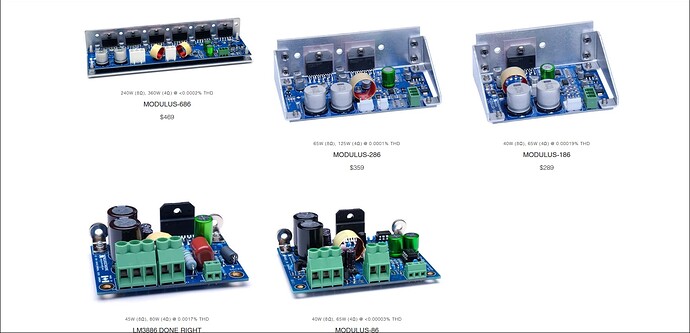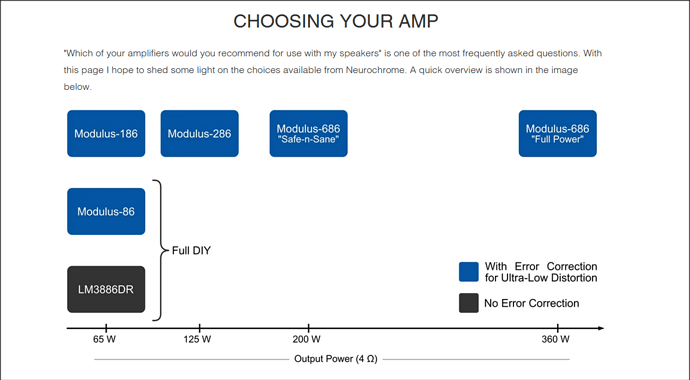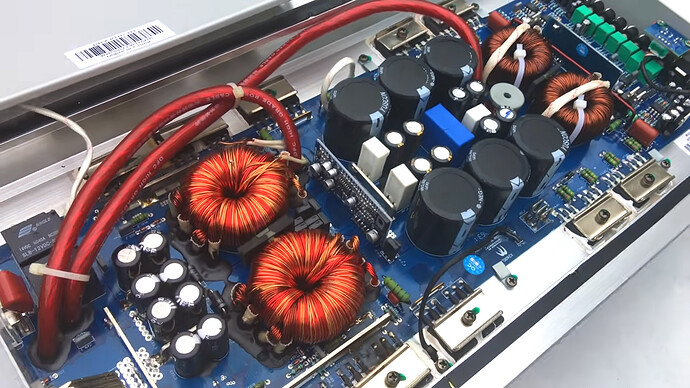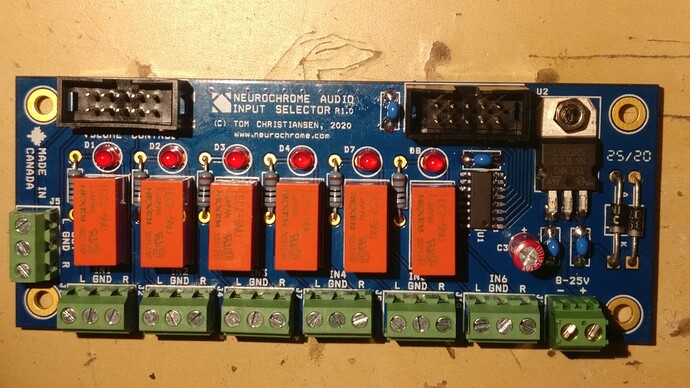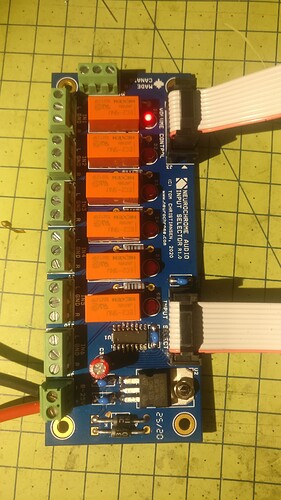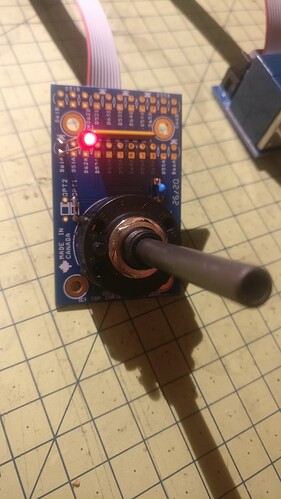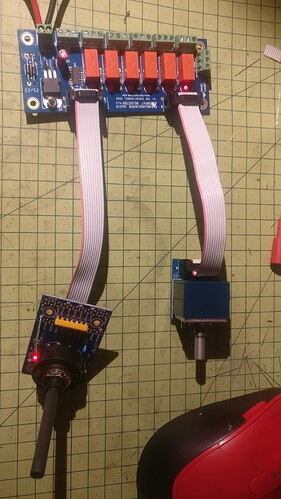Yeah, well it was MY custom install, and I KNEW better. I have/had a large discharge resistor bank I was SUPPOSED to use to unload them, BUT, hehe, Oooops.
I think it must have been a very BRIGHT and HOT, momentary short to ground, that saved me there @SmilingOgre.
“Just because it’s unplugged, don’t mean it’s not HOT” !!!
Repeating. Nice, nice, and more nice.
I don’t know the 3886. If you’re getting those rates, at those resistances, with usable THD, that’s all you need. ![]()
Unfortunately I don’t have a good source for it. Bought a 50 quid china preamp so I can test it at least with a hifiberry dac. So the next project is already on the list… an input selector with volume control and possibly a tone control. And possibly a balanced output but that adds 150 dollares to the bill. The diy and high-end people don’t seem to like tone controls so it’s really hard to find a decent one. But I can’t live without it. I always reduce the highs quite a bit and bass is on 0 at max, too. Our local hifi guy said “you want to take away what doesn’t sound good, but you don’t want to hear what the machine adds”
Low total harmonic distortion was a design goal apparently and from what I understand is really low on the modulus series amps.
I tried to look and couldn’t find any FAQ as to what Hz. he’s rating the THD at (assuming 1k), but pretty damned low for sure.
THD
-136 dBc
(0.000016 %)
1 W, 8 Ω, 1 kHz
THD
-134 dBc
(0.000019 %)
40 W, 8 Ω, 1 kHz
THD+N
-117 dBc
(0.00014 %)
40 W, 8 Ω, 1 kHz
Whatever the f*ck that means
Yes, VERY apparently so. Super clean looking. I absolutely detest (mostly mobile audio, but also in Home Theater), overrated amps, but only produce “claimed” power levels, under INSANE THD levels.
Loads of respect, for clean, true power ratings.
Thank you Sir.
He really helps out, and goes into the details, which is nice.
“I want more power and am willing to spend a bit more to get it. Which amp would you recommend?”
The Modulus-286 uses two LM3886 ICs in parallel and, therefore, offers twice output current capability of the Modulus-86, Modulus-186, and LM3886DR. This makes it possible to use the Modulus-286 with a ±35-36 V power supply and get 125 W into 4 Ω and 65 W into 8 Ω.
I recommend using a Power-86 or Power-686 with a 2x25 VAC, 200-300 VA power transformer to power a stereo Modulus-286 amp. The ±36 V version of the Connex SMPS300REh would be suitable as well. I recommend using a 2U tall chassis with a minimum depth of 300 mm for the Modulus-286.
If you’re able to cut the necessary holes in the chassis yourself, expect a stereo Modulus-286 build in a ModuShop chassis to set you back around $1000-1100. A build in a fully customized ModuShop chassis will run closer to $1300-1400.
“I would like to build the Modulus-686, but am unsure of how to proceed. Any advice?”
If you want the maximum output power from your Modulus-686 build, you need to use a ±35-36 V power supply. With this supply voltage the Modulus-686 dissipates quite a bit of heat and will need a chassis with a sizeable heat sink. The ModuShop 4U x 400 x 440 mm Dissipante chassis is a good choice. I recommend using a 2x25 VAC toroidal power transformer (600-800 VA) and a Power-686 for a stereo build. Those who wish for more supply capacitance should use two Power-686, one per channel. The options for switching power supplies are very limited for this voltage. The Connex SMPS800RE (get a custom ±36 V version) appears to be the best option. You’ll need one SMPS800RE per Modulus-686. The finished Modulus-686 will provide 240 W into 8 Ω and 360 W into 4 Ω.
For those who don’t need the full 240 W but would like to get at least 100 W into 8 Ω, there is another excellent option: The Modulus-686 Safe-n-Sane Build. By lowering the supply voltage for the Modulus-686, its maximum output power is lower, but it also dissipates much less heat. This offers two advantages:
- A stereo amp will fit in a 3U x 300 x 330 mm ModuShop Mini Dissipante chassis.
- The amp can be powered by two Mean Well RPS-400-27-C switching power supplies, which are available from Mouser (P/N: 709-RPS400-27-C).
Most of his stuff is not totally diy, only the smallest amp you can buy the bare board. The bigger ones have all components already soldered. but still plenty of choices. Power supplies, soft start, speaker protection and all you need to build a preamp, passive or active, single ended or balanced… Because i definately needed another rabbit hole…
I was always a fan of Old School Rockford Fosgates, and love watching the bench tests, and board breakdowns. Maybe even throw in an old Hifonics for giggles.
That is beyond my horizon. It’s taken me 2 days to find out how to produce a test signal with 100mV I can use to measure the gain rate with the equipment I have. But if you’re interested, there are a lot of measurements for this amp on Tom’s website neurochrome.com in the article description.
The modulus series has quite a few fans and there are some custom amp builders using them in really expensive equipment.
Groove, Thanks!!
Just hooked it up to the speakers, preamp, hifiberry DAC and the telly. It’s a bit late for a proper test so I can’t really get a good idea yet. Also, it doesn’t have tone control or a balance dial so I have to get used to not being able to reduce treble and bass. With some stereos I reduce treble to -7 or so and bass rarely in the plus, usually -2 or so.
The signal from the TV comes from a optical-to-RCA converter and seems to be a bit noisy, but I blame the cheap preamp for any noice or hums for now. The input from the hifiberry is stronger and from what I heard so far very clean and almost analytic sounding compared to my old NAD 3020e, which has a reputation for a very warm tone. I could never describe the sound of a stereo very well, I think the terms people use to describe sounds are all bollocks. It either sounds natural or it doesn’t. Natural reproduction doesnn’t mean it’s enjoyable. But the main point is that the 3 dimensional room is there and you can hear the instruments where they are in the room. The human hearing abilities are a very complex topic and the reason why there are few other sectors of the market where there is so much snake oil available.
Long story short, you have to like what you’re hearing. Right now, still being used to the sound of the NAD and only on low volumes it’s different, a bit colder sounding but not bad in any way. Thats’s too early to judge. Maybe I’ll get used to no tone control but the plan is to add one. Balance could be done with 2 individual volume pots instead of a stereo one. And since I built it myself it’s probably harder to see the drawbacks. Time will tell…
Oh and the missing heatsink doesn’t seem to be a problem at low volumes. After about an hour the aluminium panel I’m using as a heatsink still feels cool.
Over the holidays I’ve had some time to compare the new amp to my old Creek 4040s3 amp and although I’m not surprised that the new amp lost, I was surprised how obvious the difference was. So the 50 quid china preamp needs to be replaced and I started the next phase of the project.
The same guy who designed the new amp also designed most parts you need for a preamp so I got an input selector with volume control. Tone and balance controls seem to be frowned upon these days so I’m sticking to the recommendations for now. But I really don’t think I can live without tone controls. Let’s see what happens…
Right… Got the input selector, selector switch and volume pot assembled and it seems to be working fine.
Now I have to find a nice enclosure for it. I’m afraid that is going to be the longest part since all my ideas usually need 3 failed attempts before I get where I want to be.
A while ago I bought a hifiberry dac for a raspberry pi and it sounds really good so maybe I’ll put it into the same enclosure with the preamp and a 4 inch touch screen. Or no screen at all, you can just use it with a phone app or the browser.
Can’t wait to see it all finished and dolled up. Good job, man!
Well, if I go without the touch screen it’s probably going to look a bit boring. Just a box with 2 dials, a switch and a few LEDs. But as our local Hifi guru used to say: You buy a stereo with your ears, not your eyes. In my case, I chose the kit for the diy factor with the hope to get something that sounds good as well. And because I like long lasting stuff, the amp and now the preamp are all built from good quality components with a almost 100% documentation. Even if the company won’t be able to supply spares it should still be possible to repair them even in 30 years, when it will hopefully still be in use by somebody in the family.
